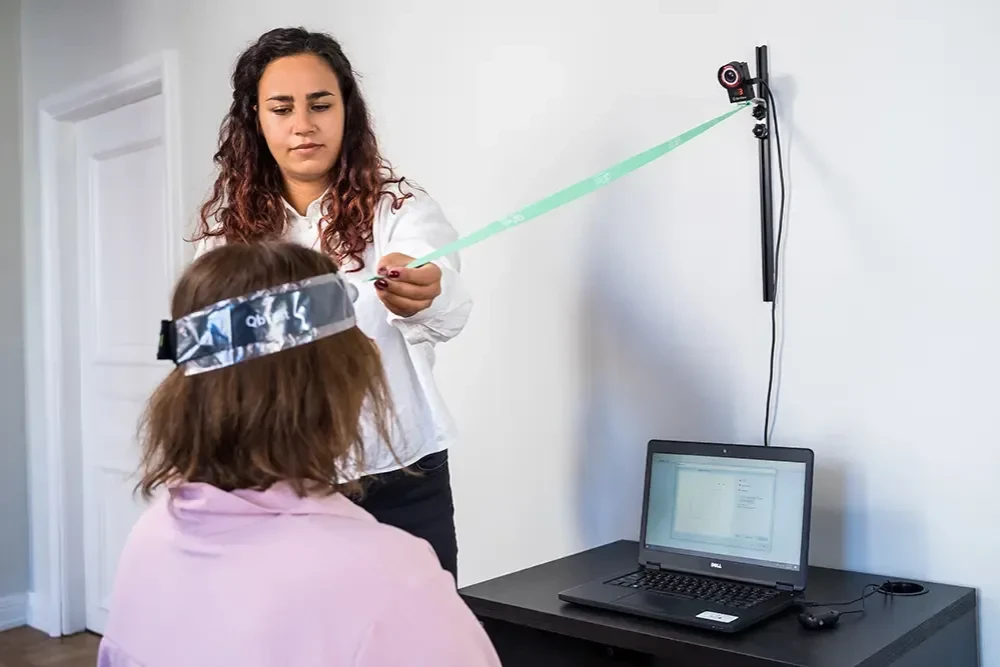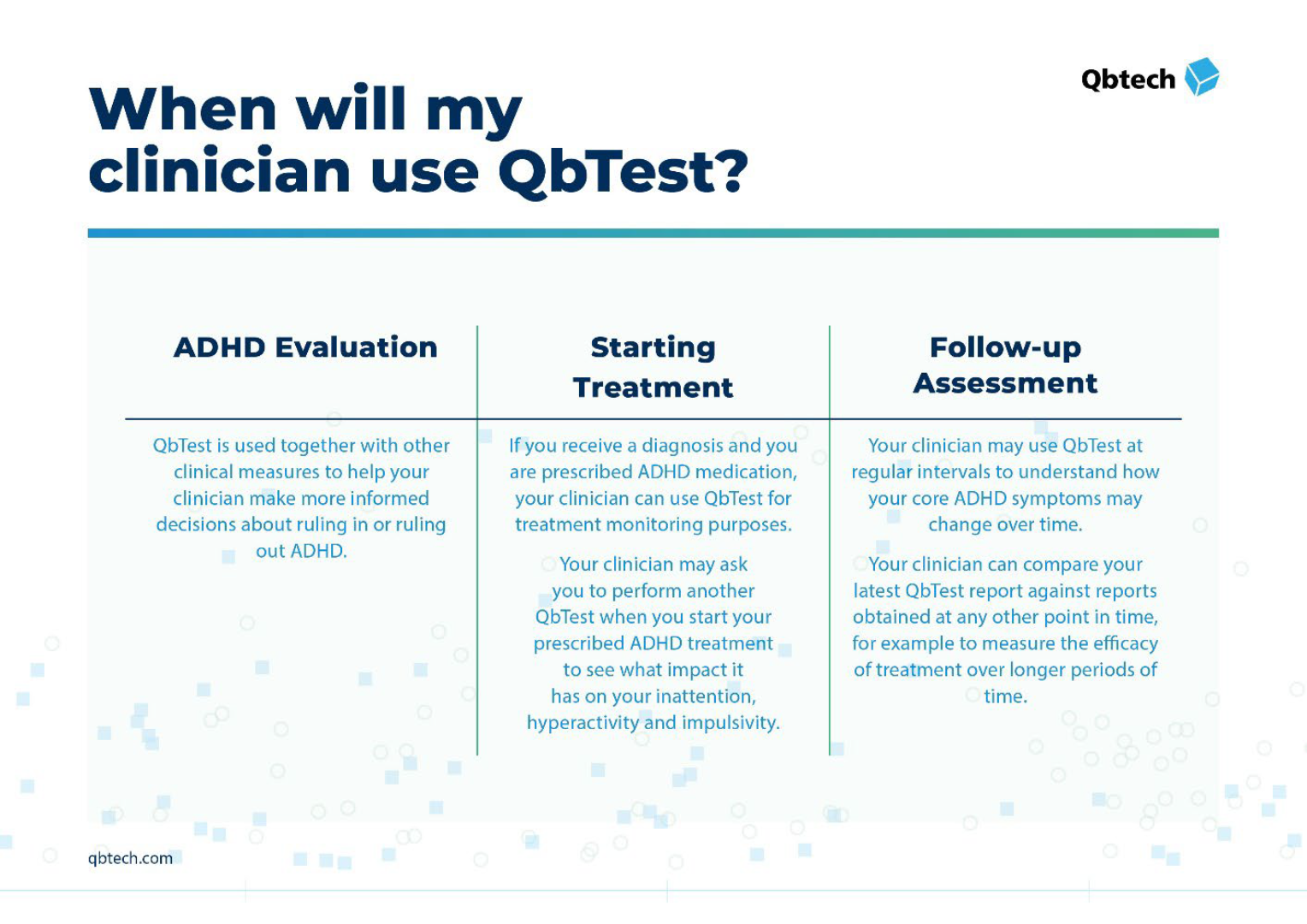
A diagnostic assessment for ADHD involves three main parts: gathering a clinical history through an interview with your provider, an objective measurement of symptoms using QbTest, and the completion of one or more rating scales.
This tool has been designed to assist healthcare professionals who regularly conduct assessments for the diagnosis and monitoring of ADHD. Additionally, we provide the option of using QbCheck to evaluate ADHD either online or in our clinic, with the flexibility to pay per test,
QbTest is an FDA-cleared test measuring all 3 core symptom domains; hyperactivity, impulsivity, and inattention. QbTest is used when evaluating ADHD symptoms and measuring response to ADHD treatment.
QbTest involves a 15 or 20-minute computer-based task that measures your (or your child’s) ability to maintain attention and impulse control. Meanwhile, an infrared camera tracks movements, and therefore activity, during the test. The results are based on a comparison of your (or your child’s) performance with data from other people of the same sex and age who do not have ADHD
The test equipment consists of an infrared camera, a headband with an infrared marker attached to it, a laptop, and a responder button, like so:
[Image 3 (Adult) – Download here]
Sample QbTest reports are shown below:
The raw data is available immediately after the test is completed. However, your clinician must first interpret the data together with other relevant information. In some cases, feedback can be provided in the same appointment, but sometimes a follow-up appointment will need to be scheduled.
Testing is typically completed in the following frequency:

QbTest is used together with other clinical measures to help your clinician make more informed decisions about ruling in or ruling out ADHD.
If you receive a diagnosis and you are prescribed ADHD medication, your clinician can use QbTest for treatment monitoring purposes.
Your clinician may ask you to perform another QbTest when you start your prescribed ADHD treatment to see what impact it has on your inattention, hyperactivity and impulsivity.
Your clinician may use QbTest at regular intervals to understand how your core ADHD symptoms may change over time.
Your clinician can compare your latest QbTest report against reports obtained at any other point in time, for example to measure the efficacy of treatment over longer periods of time

At Aim Behavioral Health, we understand that living with ADHD can feel like a constant battle. If you're struggling with focus, organization, or managing daily tasks, you're not alone—and you don't have to face it by yourself. We're here to guide you on your path to a more focused and fulfilling life. Using the QB test, a cutting edge assessment tool that helps us fully understand your specific needs, this lets us make a treatment plan that is just right for you. At Ashland Integrative Medicine (AIM) Behavioral Health, Manish Parikh, MD, a board-certified psychiatrist and addiction medicine specialist, and his team provide comprehensive addiction treatment and counseling to adults living in and around Ashland, Kentucky.